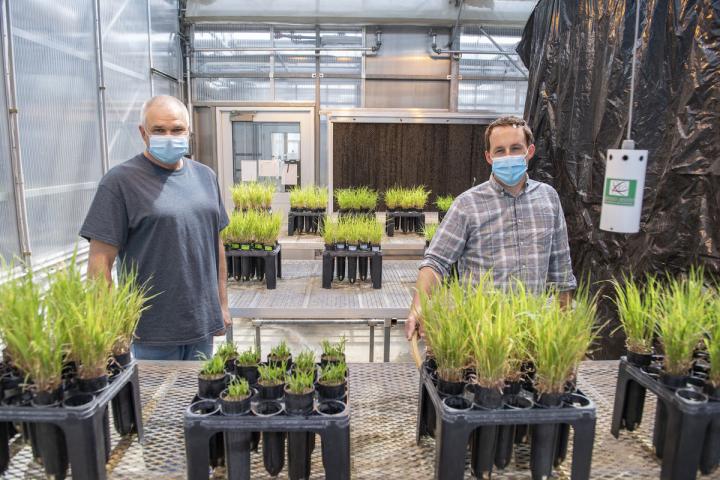
Credit: Brian Persinger/WVU
For more than 30 years, the world’s largest collection of arbuscular mycorrhizal fungi – the “good” kind essential for sustaining plant life – has been rooted at West Virginia University.
Over the next several years, the tiny, soil-dwelling residents of the International Culture Collection of (Vesicular) Arbuscular Mycorrhizal Fungi will be relocated to the University of Kansas thanks to a grant from the National Science Foundation.
INVAM’s origins date back to the 1980s when two fungi researchers – Joseph Morton, then assistant professor of plant pathology, and Norman Schenk, professor of plant pathology at University of Florida, each began small culture collections on their respective campuses.
In 1985, Schenk secured funding from the National Science Foundation to create a living culture collection to preserve germ plasm. He served as curator of the collection for five years until his retirement in 1990 when it was merged with the local collection maintained by Morton.
With perpetual funding from NSF, Morton, along with research technician Bill Wheeler, spent 27 years growing the collection from 187 cultures to approximately 1,000 today.
It’s an invaluable research and educational too used by students to discover microbes, researchers to explore the symbiotic relationship between the fungi and plants, and agricultural businesses to improve management practices.
When Morton retired in 2017 – and Wheeler moving in that direction as well – Matt Kasson, associate professor of forest pathology and mycology in the Davis College of Agriculture, Natural Resources and Design, stepped in to direct INVAM until funding could be secured to transfer the collection to another university.
Unlike Morton, Kasson does not specialize in this unique group of fungi but was enthusiastic to shepherd it until its future could be secured.
“It’s been a real privilege and an honor to oversee the collection in a director capacity,” Kasson said. “West Virginia University and the National Science Foundation have devoted tremendous resources to the survival of a very important collection over the last 30 years. We need to celebrate that – and now the collection is ready for the next phase of its life.”
The collection’s impending transfer is bittersweet for Wheeler, who’s spent most of his career working with these fungi.
“The transfer will ensure that the collection will continue, and all the years of research and efforts that Joe Morton and I worked through together will not be lost. I was very fortunate to have had the opportunity to be able to support the collection for the past 31 years,” Wheeler said. “I want to take time and thank Matt Kasson for finding ways to integrate the collection into his research and being director of the collection so it could stay at WVU in the interim.”
Over the next several years, WVU researchers will duplicate the collection and send it to Jim Bever, an expert on arbuscular mycorrhizal fungi and former post-doc of Morton’s, at the University of Kansas to see if he can cultivate it.
“It’s not something where you just hand them the keys and they drive away,” Kasson said. “It’s a real art and a science to maintain these fungi. Even for someone as experienced as Jim, successfully transitioning a collection is a delicate task.”
Arbuscular mycorrhizal fungi must be cultured on living plants for three months out of the year, every year. When they are not being cultured on plants, they reside with roots and soil in a large walk-in cooler where they are maintained for up to year before the process starts again.
Researchers at both universities will cultivate the fungi on plants in parallel.
“Being able to recover similar levels of inoculum during the harvest phase will tell us if the conditions in Jim’s lab are similar enough to the conditions we’ve refined over the last 31 years to sustain cultures in perpetuity,” Kasson explained.
With culture viability at the forefront, Kasson and Wheeler will also use the funds to better understand the pathogens and parasites that may exist in the collection itself.
“Even though these are fungi, there are other fungi that attack them, and we know they exist in the collection. Any time you have a big collection, you’re going to get these kinds of things,” Kasson said. “Now is our opportunity to take a comprehensive look at the mycoparasites in the collection that prey on these fungi and could impact their vitality.”
Strains of interest found to harbor interesting or unique fungal parasites will stay behind where they can receive closer scrutiny.
If things go according to plan, Kasson projects INVAM will fully transition to the University of Kansas by 2024.
###
Media Contact
Lindsay Willey
[email protected]
Original Source
https:/




